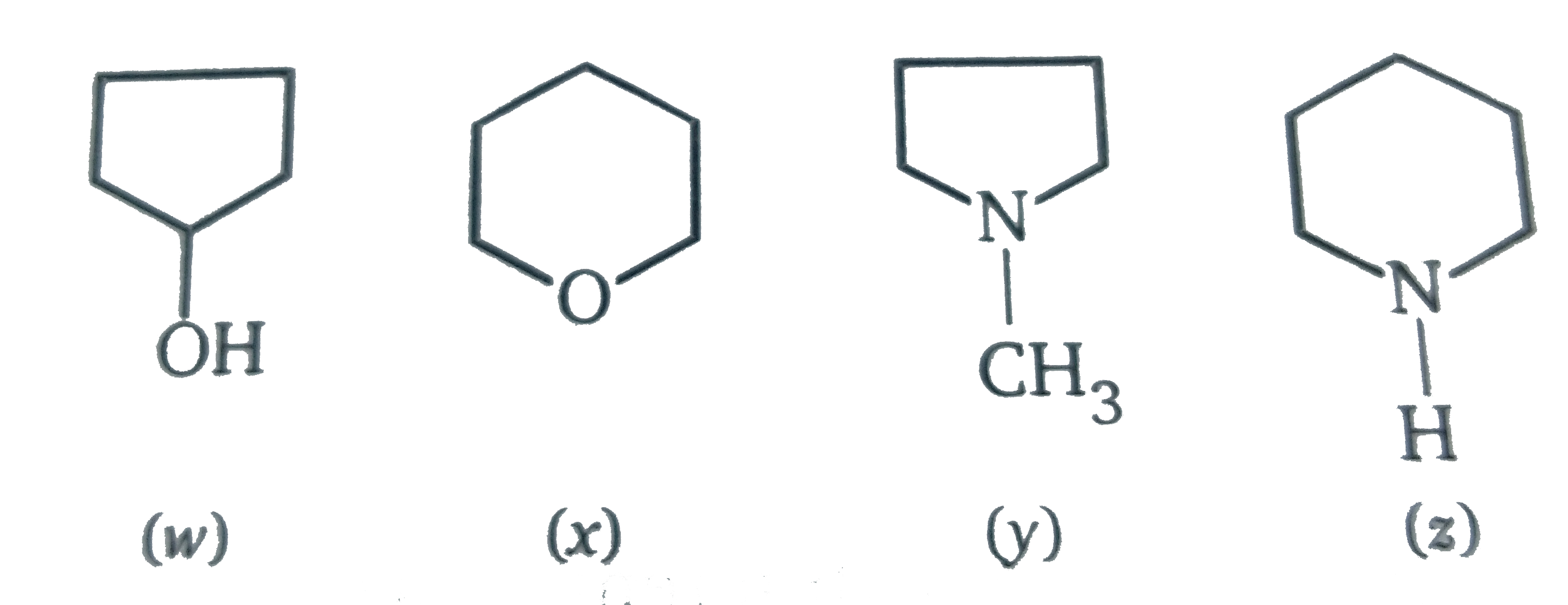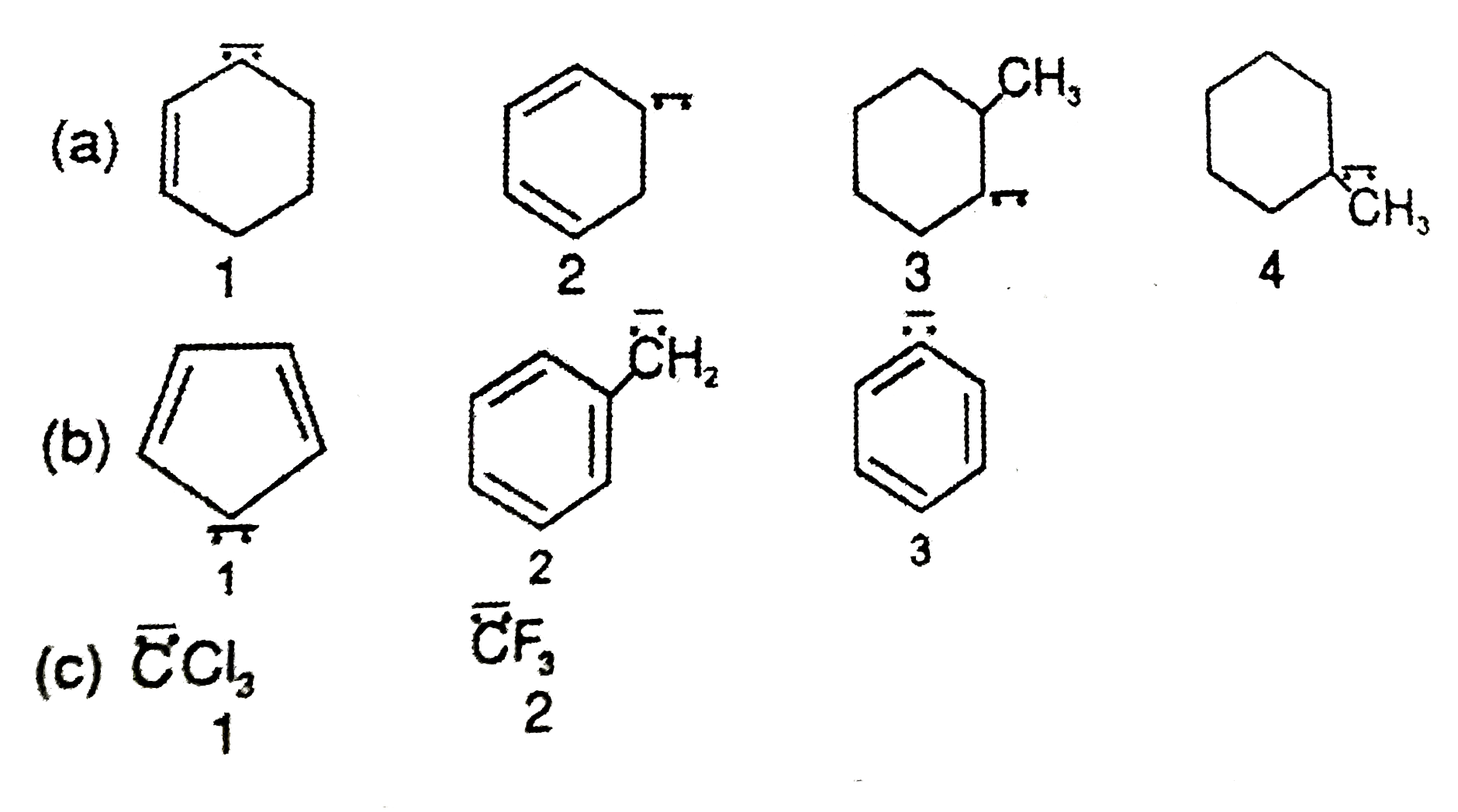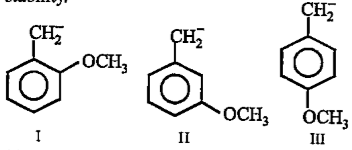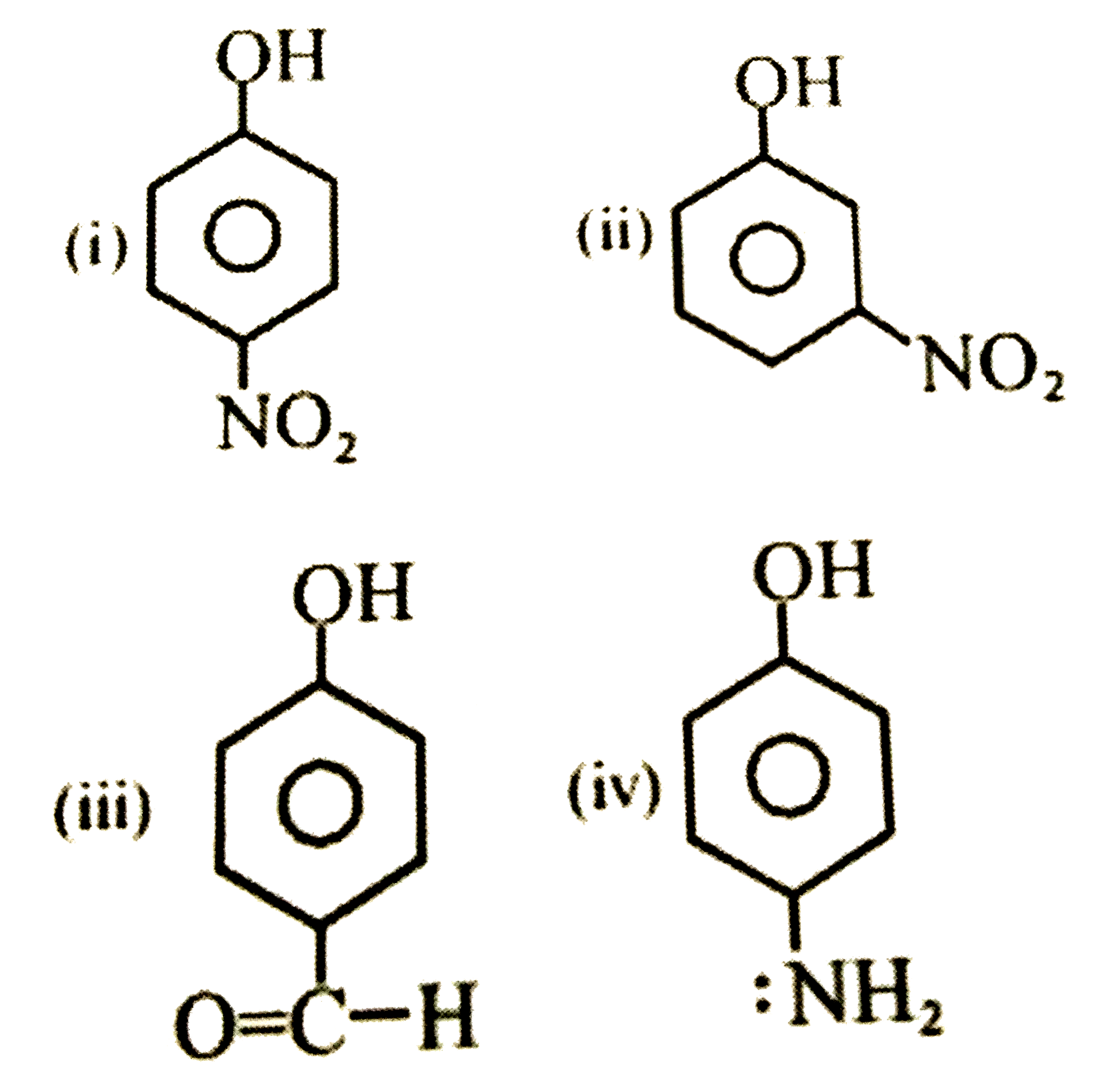Arrange the following in the decreasing order of their boiling points HF,HCl,HBr
To arrange the compounds HF, HCl, and HBr in decreasing order of their boiling points, we need to analyze the intermolecular forces present in each compound.
1. Understand the Compounds:
- HF (Hydrogen Fluoride)
- HCl (Hydrogen Chloride)
- HBr (Hydrogen Bromide)
2. Identify Intermolecular Forces:
- HF exhibits hydrogen bonding due to the highly electronegative fluorine atom.
- HCl and HBr primarily exhibit Van der Waals forces (dispersion forces).
3. Evaluate the Strength of Intermolecular Forces:
- Hydrogen bonding is a strong type of intermolecular force, stronger than Van der Waals forces.
- Among HCl and HBr, the strength of Van der Waals forces increases with the size of the molecule (larger molecular mass leads to stronger dispersion forces).
4. Compare Molecular Masses:
- HF has a molecular mass of approximately 20 g/mol.
- HCl has a molecular mass of approximately 36.5 g/mol.
- HBr has a molecular mass of approximately 80 g/mol.
- Therefore, the order of molecular mass is: HBr > HCl > HF.
5. Determine Boiling Points:
- Since HF has hydrogen bonding, it will have the highest boiling point.
- HBr, with the largest molecular mass, will have a higher boiling point than HCl due to stronger Van der Waals forces.
- Thus, the boiling points can be arranged as follows:
- Highest: HF (due to hydrogen bonding)
- Middle: HBr (due to larger size and stronger Van der Waals forces)
- Lowest: HCl (weaker Van der Waals forces compared to HBr)
6. Final Arrangement:
- The final order of boiling points in decreasing order is:
- HF > HBr > HCl
- HF (Hydrogen Fluoride)
- HCl (Hydrogen Chloride)
- HBr (Hydrogen Bromide)
- HF exhibits hydrogen bonding due to the highly electronegative fluorine atom.
- HCl and HBr primarily exhibit Van der Waals forces (dispersion forces).
- Hydrogen bonding is a strong type of intermolecular force, stronger than Van der Waals forces.
- Among HCl and HBr, the strength of Van der Waals forces increases with the size of the molecule (larger molecular mass leads to stronger dispersion forces).
- HF has a molecular mass of approximately 20 g/mol.
- HCl has a molecular mass of approximately 36.5 g/mol.
- HBr has a molecular mass of approximately 80 g/mol.
- Therefore, the order of molecular mass is: HBr > HCl > HF.
- Since HF has hydrogen bonding, it will have the highest boiling point.
- HBr, with the largest molecular mass, will have a higher boiling point than HCl due to stronger Van der Waals forces.
- Thus, the boiling points can be arranged as follows:
- Highest: HF (due to hydrogen bonding)
- Middle: HBr (due to larger size and stronger Van der Waals forces)
- Lowest: HCl (weaker Van der Waals forces compared to HBr)
- The final order of boiling points in decreasing order is:
- HF > HBr > HCl
Topper's Solved these Questions
- CHEMICAL BONDING AND MOLECULAR STRUCTUREBook:MODERN PUBLICATIONChapter:CHEMICAL BONDING AND MOLECULAR STRUCTUREExercise:Conceptual Questions (1)
Explore 12 Videos
- CHEMICAL BONDING AND MOLECULAR STRUCTUREBook:MODERN PUBLICATIONChapter:CHEMICAL BONDING AND MOLECULAR STRUCTUREExercise:Conceptual Questions (2)
Explore 21 Videos
- CHEMICAL BONDING AND MOLECULAR STRUCTUREBook:MODERN PUBLICATIONChapter:CHEMICAL BONDING AND MOLECULAR STRUCTUREExercise:UNIT PRACTICE TEST
Explore 13 Videos
- CLASSIFICATION OF ELEMENTS AND PERIODICITY IN PROPERTIES Book:MODERN PUBLICATIONChapter:CLASSIFICATION OF ELEMENTS AND PERIODICITY IN PROPERTIES Exercise:UNIT PRACTICE TEST
Explore 13 Videos
Similar Questions
Knowledge Check
Arrange the following in the decreasing order of their boiling points:
I. A(a) (I)>(III)>(II)>(IV)B(b) (I)>(II)>(III)>(IV)C(c) (III)>(IV)>(II)>(I)D(d) (IV)>(III)>(II)>(I)
A(a) (I)>(III)>(II)>(IV)B(b) (I)>(II)>(III)>(IV)C(c) (III)>(IV)>(II)>(I)D(d) (IV)>(III)>(II)>(I)Arrang the following (w,x,y,z) in decreasing order of their boiling points :
 Aw>x>z>yBw>x>y>zCw>z>y>xDw>z>x>y
Aw>x>z>yBw>x>y>zCw>z>y>xDw>z>x>yArrange the following in the decreasing order of their boiling points:
I. C9H20 II. C8H18
III. A(a) (I)>(II)>(III)>(IV)B(b) (IV)>(III)>(II)>(I)C(c) (I)>(II)>(IV)>(III)D(d) (III)>(IV)>(II)>(I)
A(a) (I)>(II)>(III)>(IV)B(b) (IV)>(III)>(II)>(I)C(c) (I)>(II)>(IV)>(III)D(d) (III)>(IV)>(II)>(I)
Arrange the following in decreasing order of stability

View SolutionArrange the following in the decreasing order of their boiling points
i) n-butane
ii) 2-methylbutane
iii) n-pentane
iv) 2,2-dimethylpropane
View SolutionArrange the following in decreasing order of stability.

View SolutionArrange the following compound in decreasing order of boiling point
View SolutionArrange the following in decreasing order of acidity ?

View Solution



